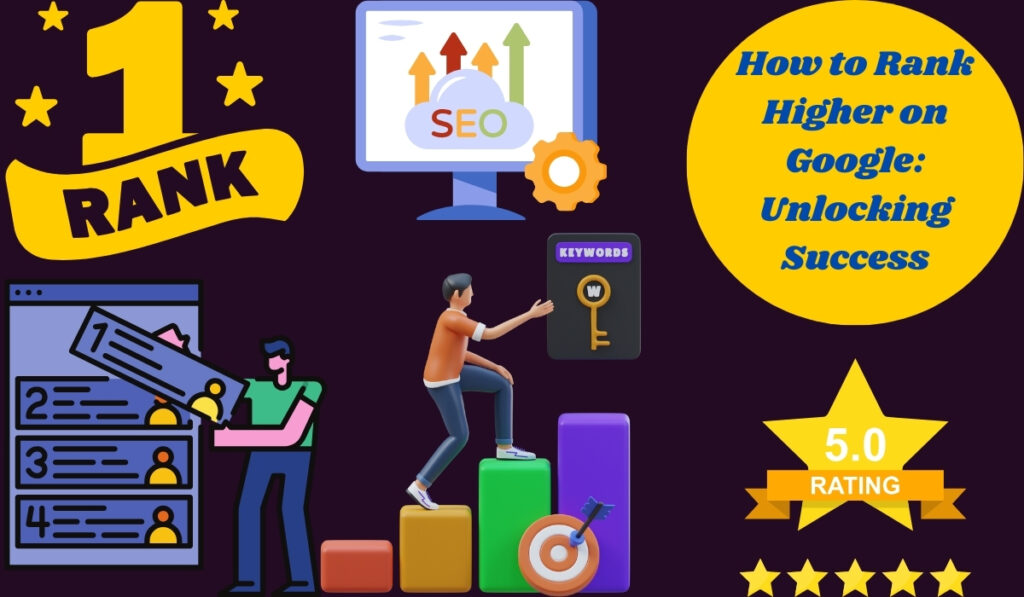Introduction
In the digital age, ranking higher on Google is paramount for any business looking to thrive online. The competition is fierce and having a robust SEO strategy is no longer optional but a necessity. We aim to provide you with comprehensive insights and actionable steps to help you outshine your competitors and secure top positions in Google search results.
Understanding the Importance of SEO
What is SEO?
Search Engine Optimization (SEO) is the act of upgrading your site to build its permeability for important pursuits. The better visibility your pages have in query items, the almost certain you are to earn consideration and draw in imminent and existing clients to your business.
Why SEO Matters?
SEO is crucial because it:
- Increases Organic Traffic: A higher ranking means more visitors to your site.
- Builds Credibility and Trust: Users trust search engines, and appearing in the top spots signals credibility.
- Enhances User Experience: Good SEO practices improve the usability of a site.
- Offers Long-Term Strategy: Unlike paid advertising, SEO offers sustained results.
Key Components of Effective SEO
1. Keyword Research
Keyword research is the foundation of SEO. It includes finding the right watchwords that your interest group is looking for. Tools like Google Keyword Planner, SEMrush, and Ahrefs can help identify high-volume and low-competition keywords.
How to Perform Keyword Research?
- Identify Your Niche: Understand your industry and audience.
- Use Keyword Tools: Utilize keyword research tools for data-driven decisions.
- Analyze Competitors: Look at what keywords your competitors are ranking for.
- Long-Tail Keywords: Focus on long-tail keywords for more specific searches.
2. On-Page SEO
On-page Search engine optimization (SEO) includes streamlining individual pages to rank higher and procure more important traffic. Here are the crucial elements:
Title Tags
- Include Primary Keyword: Ensure your primary keyword is in the title.
- Keep It Engaging: Make it compelling to increase click-through rates.
Meta Descriptions
- Summarize Content: Provide a brief, enticing summary of the page.
- Use Keywords: Include primary and secondary keywords naturally.
Header Tags (H1, H2, H3)
- Organize Content: Use header tags to structure your content.
- Include Keywords: Naturally include keywords in your headers.
URL Structure
- Keep It Simple: Use clear and concise URLs.
- Include Keywords: Ensure your main keyword is part of the URL.
Content Optimization
- High-Quality Content: Create valuable, informative, and engaging content.
- Keyword Placement: Strategically place keywords throughout your content.
- Internal Linking: Link to other relevant pages on your site.
- Multimedia: Use images, videos, and infographics to enrich content.
3. Technical SEO
Technical SEO – Specialized Web optimization (SEO) includes advancing your site’s foundation to guarantee web search tools can slither and record your webpage.
Site Speed
- Optimize Images: Compress images without losing quality.
- Minify CSS and JavaScript: Reduce the size of your CSS and JavaScript files.
- Use Caching: Implement browser caching to speed up load times.
Mobile-Friendliness
- Responsive Design: Ensure your site is mobile-friendly and responsive.
- Mobile Optimization: Optimize for mobile users to improve user experience.
XML Sitemap
- Create a Sitemap: Generate an XML sitemap to help search engines index your site.
- Submit to Search Engines: Submit your sitemap to Google Search Console and Bing Webmaster Tools.
4. Off-Page SEO
Off-page SEO: Web optimization (SEO) centers around expanding the power of your area through happy creation and acquiring backlinks from different sites.
Backlink Building
- High-Quality Backlinks: Aim for backlinks from reputable and authoritative sites.
- Guest Blogging: Write guest posts on relevant sites to build links.
- Broken Link Building: Find and replace broken links on other sites with your content.
Social Media Marketing
- Engage on Social Media: Actively participate on social media platforms.
- Share Content: Share your content to increase visibility and drive traffic.
Local SEO
- Google My Business: Optimize your Google My Business profile.
- Local Citations: Ensure your business is listed on local directories.
- Reviews and Ratings: Encourage customers to leave positive reviews.
Advanced SEO Strategies
1. Content Marketing
Content marketing is an essential methodology zeroed in on making and conveying significant, pertinent, and steady satisfaction to draw in and hold a characterized crowd.
Blogging
- Regular Updates: Keep your blog updated with fresh content.
- Engaging Topics: Write on topics that resonate with your audience.
- SEO-Friendly: Optimize blog posts with keywords and meta descriptions.
Infographics and Videos
- Visual Content: Create infographics and videos to simplify complex topics.
- Shareability: Make visual content shareable to increase reach.
2. User Experience (UX) Optimization
User experience is a critical variable in Website design enhancement. A positive client experience can prompt longer site visits and lower skip rates.
Site Navigation
- Easy Navigation: Ensure your site is easy to navigate.
- Clear Menus: Use clear and concise menus.
Readability
- Font and Colors: Use readable fonts and color schemes.
- Spacing and Layout: Ensure proper spacing and clean layout.
3. Analytics and Reporting
Analytics and reporting are fundamental for estimating the progress of your website optimization endeavors.
Google Analytics
- Track Performance: Use Google Analytics to track website performance.
- Analyze Traffic: Understand where your traffic is coming from.
- Measure Conversions: Track conversions to measure the success of your SEO strategies.
Google Search Console
- Monitor Indexing: Ensure your pages are indexed correctly.
- Identify Issues: Detect and fix issues that affect your site’s visibility.
Conclusion
Achieving high rankings on Google requires a comprehensive and strategic approach. By focusing on keyword research, on-page and technical SEO, content marketing, and user experience, you can enhance your site’s visibility and attract more organic traffic. Consistently applying these strategies and monitoring your performance will help you stay ahead of the competition and achieve long-term success in the digital landscape.

